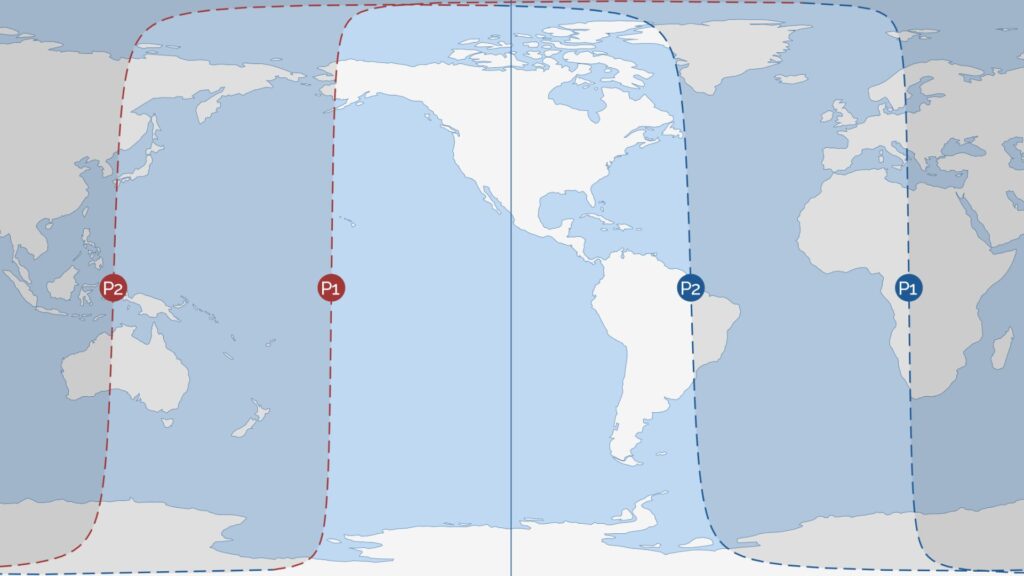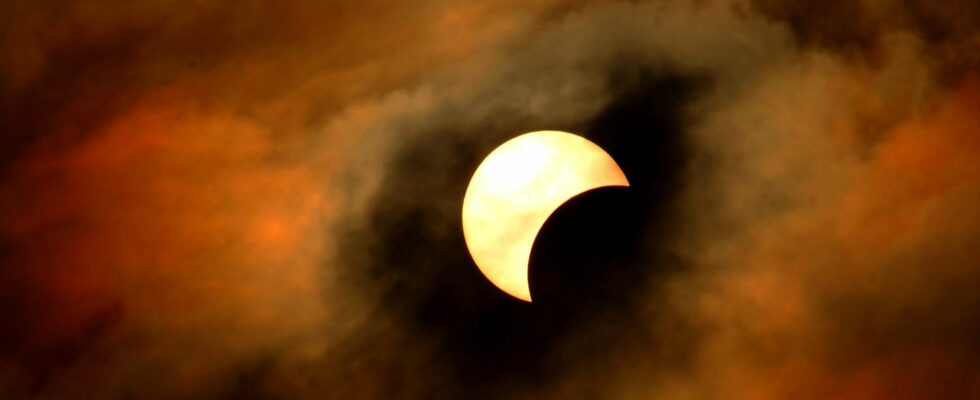The year 2024 is punctuated by 4 eclipses, including 2 lunar eclipses and 2 solar eclipses. Not all of them are visible from mainland France. Where should you go on Earth to chase these eclipses?
The hunt for eclipses is on! In 2024, 4 eclipses will occur on Earth: 2 solar eclipses and 2 lunar eclipses. Observing such a spectacle remains a fairly rare moment in one’s life. If you want to see these phenomena with your own eyes, it is strongly recommended to anticipate them and plan the trip.
Here’s when these eclipses will occur, and where you can go on Earth to hope to admire them in 2024.
Solar eclipses of 2024
During a solar eclipse, the Moon obscures the Sun as seen from Earth, partially or completely. An alignment between the Earth, the Moon and the Sun is therefore necessary for a solar eclipse to occur. Be careful, a solar eclipse cannot be observed without precautions.
Where will we see the total solar eclipse of April 8, 2024?
The first solar eclipse of 2024 is a total eclipse. It will occur on Monday April 8. During this type of eclipse, the lunar disk completely obscures the Sun at the peak of the phenomenon.
Unfortunately, this eclipse is invisible in mainland France, so you have to make the trip to hope to admire it. The entire eclipse is observable in a thin band passing over North America: it begins in the Pacific Ocean, crosses Mexico, the United States and Canada and ends in the Atlantic Ocean.
The eclipse will be visible partially from Canada to Costa Rica, including the Dominican Republic. Part of Europe will see the eclipse in its partial phase: Iceland, Ireland, United Kingdom, Spain and Portugal.
This solar eclipse lasts 5 hours and 10 minutes, including 3 hours and 16 minutes for the total phase.
Where will we see the annular solar eclipse of October 2, 2024?
The second solar eclipse of the year 2024 is an annular eclipse. It takes place on Wednesday October 2. During an annular solar eclipse, the Moon does not completely obscure the solar disk: at the maximum of the phenomenon, a bright ring surrounds the lunar disk.
Mainland France cannot witness this solar eclipse, which mainly occurs above the Pacific Ocean. The band of centrality of the eclipse begins north of the Earth’s equator, before reaching South America, crossing Patagonia and the northern Falklands. It ends in the South Atlantic.
South America (Chile, Bolivia, Peru, Argentina, Paraguay, Uruguay, Brazil) as well as Antarctica will be in the visibility zone of the eclipse, only in its partial phase.
This annular eclipse lasts 6 hours and 3 minutes, including 3 hours and 48 minutes in its annular phase.
Lunar eclipses of 2024
During a lunar eclipse, the Moon is plunged into the shadow (or penumbra) of the Earth. Our planet blocks the Sun’s light usually reflected by the Moon. A lunar eclipse therefore involves an alignment between the Moon, Earth and Sun. However, there is not a lunar eclipse every month.
Where will we see the penumbral lunar eclipse of March 25, 2024?
The first lunar eclipse of 2024 will be an eclipse by darkness, occurring on Monday, March 25. On the other hand, penumbral lunar eclipses are absolutely not spectacular: no one notices them. This is what happened in 2023, with the lunar eclipse of May 5, imperceptible. During a penumbral eclipse, the Moon does not pass into the Earth’s shadow, and therefore continues to be illuminated by the Sun.
Despite everything, astronomers draw up “visibility” maps of such eclipses. We can therefore say that the eclipse occurs over part of Europe, Africa, North and South America, and part of Oceania.
However, the Moon will not change its appearance, even for observers located in these places during the eclipse: no need to take a trip to hope to see something unusual, because it will necessarily be a failure.
The penumbra phase of this eclipse lasts 4 hours and 39 minutes.

Where will we see the partial lunar eclipse of September 18, 2024?
The second lunar eclipse of the year 2024 is a partial eclipse. It takes place on Wednesday September 18. During a partial lunar eclipse, the satellite is plunged into the Earth’s shadow, but only partially.
Good news: mainland France is well within the visibility zone of this lunar eclipse! It will therefore be enough to look at the Moon when it is up (and the eclipse has started) to see the phenomenon. The partial eclipse occurs over North and South America, Europe, Africa, Antarctica, as well as part of Asia.
The lunar eclipse lasts 4 hours and 6 minutes in its penumbra phase. The partial phase of the eclipse, the one that we can distinguish, lasts 1 hour and 2 minutes.


Subscribe for free to Artificielles, our newsletter on AI, designed by AIs, verified by Numerama!
